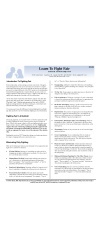In two other articles on informal leadership, we’ve looked at understanding informal leaders, and developing informal leaders (and the perils attached to that). In this article we’ll look at some ideas about how to maximize the benefits and effectiveness of informal leadership in your organization.
As we indicated, informal leaders can wield tremendous positive influence, or, when things go bad, wield a lot of destructive influence (depending on where one sits). How do you maximize the positive influences without compromising the informal leader?
Keep in mind that informal leaders earn the respect of their peers (and others) through their actions and behaviors and NOT through their linkage and relationship to “the boss”. There can be an inverse relationship between the degree that informal leaders can influence others, and the degree to which they are perceived as “part of management”.
In one sense the issue is simple. You want informal leaders to work with you, the formal leader, and support your initatives. You want their support because they are often opinion leaders — powerful opinion leaders.
However, since informal leaders often derive part of their influence because they are perceived as independent of management, you cannot coerce or manipulate informal leaders to support you. Also, it’s often the case that informal leaders become leaders because of their real, and perceived integrity. The more you pressure or coerce an informal leader, the more likely they will react against you. While some people may believe it’s important to co-opt an informal leader, the outcome is usually that it destroys the informal leader’s credibility and/or creates enemies.
What does this leave? It may be that the best you can do to maximize the benefits of informal leaders is to communicate effectively about your vision, your decisions, your goals and plans, and leave it up to the informal leader to decide where he or she stands. This is a hard thing for many formal leaders to do, since it cedes some control (or appears to). If you can’t coerce or bribe an informal leader (and you can’t over the long term without sacrificing his or her influence), then what remains, is straight forward and open communication.
Because of the nature of many informal leaders (independent thinking, critical thinking, integrity, etc), you will find that they will need to have an understanding of where the organization is going, why it is going there, and how you plan to take it there, in order for them to support you, and pull with you, not against you. They will also probably need to have the chance to respect your competence, ability and integrity in order for them to act in ways that demonstrate commitment and loyalty, both of which are important for their own ability to lead in informal ways.
So, if there is a key to getting informal leaders onside (and that’s one of the fundamental issues in terms of benefiting from their influence), it is communication. Let’s take a difficult example: downsizing.
Let’s say a company hits some economic rough spots and the executive decides to lay off several employees. One approach (and sadly, a common one), is for the formal leader (let’s say the CEO) to give very few details about the why’s and how’s of the process to both rank and file and informal leaders within the rank and file. What’s the result?
In the absence of good explanatory information, most people (including informal leaders) will judge the layoffs as unpleasant, unnecessary and harsh, and informal leaders may actually foster additional discontent because they lack the proper rational (and compassionate explanations).
However, if the CEO is open and honest about the issues, explains the reasons for the layoffs, and maps out a plan to a) prevent further layoffs and b) increase the success of the company and its employees, the context changes. What may first appear to people as a set of arbitrary and unfair decisions now develops a sensible context. In such a situation, you want your informal leaders to recognize the absolute necessity of the changes and for them to support the changes, if not enthusiastically, at least with an acknowledgement of the circumstances that caused the decision in the first place.
In order to do that, they need to have the information (as much as is possible) that YOU had when making the difficult decision. When they have this information (and if it’s credible, of course) informal leader are more likely to rally the troops in a difficult situation, rather than lose confidence in you as a formal leader.
It’s not necessary to provide informal leaders with more information than one would provide to the rank and file. In fact, treating informal leaders differently may backfire. What it does mean is that if you want to mobilize informal thought leaders, you need to provide the information to everyone. This also makes additional sense because informal leaders can emerge, and come and go from within the rank and file, and assistance from them is not always predictable.
It comes down to this. You want the support of rank and file, and influence leaders can help bring that about, but all parties need to understand the reasoning of formal leaders in order to begin the process of supporting the decisions.
There’s one other element. As a formal leader (let’s say in the downsizing example), the rank and file will rally together, and informal leaders will step in to the extent that they respect YOUR loyalty and compassion. You must communicate loyalty to remaining staff, and compassion for both those that leave and those that remain, through your words, but even more importantly, through your actions. If the layoffs are accompanied by perceived mistreatment, thought leaders will tend to pull their support.
The upshot is the best way to mobilize informal leaders is to communicate the facts of decisions in as much detail as possible, and to show yourself as compassionate, concerned and supportive of THEM. One of the best ways to engender support from others is to offer support to them and their peers.






